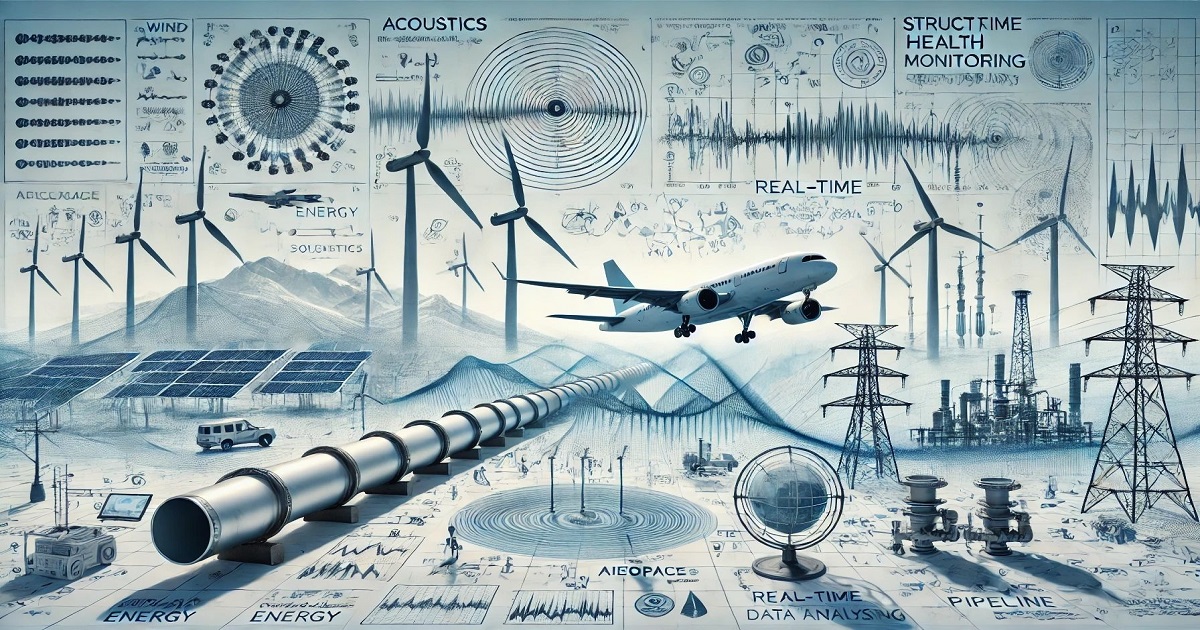Application of Acoustics as a Structural Health Monitoring Technology
A special issue of Applied Sciences (ISSN 2076-3417). This special issue belongs to the section "Acoustics and Vibrations".
Deadline for manuscript submissions: 20 March 2026 | Viewed by 1609

Special Issue Editors
Interests: condition monitoring; structural health monitoring; acoustics, and vibration
Special Issue Information
Dear Colleagues,
Acoustics plays a pivotal role in the evolving field of structural health monitoring (SHM), offering robost methods for the real-time and intermittent assessment of materials, structures, and machinery. Techniques such as sound, acoustic emission, ultrasonics, acousto-ultrasonics, and guided waves are essential in civil engineering, aerospace, automotive, energy, and manufacturing industries, amongst others. These technologies allow for early fault detection, reducing the need for expensive manual inspections while enhancing reliability and safety.
We invite contributions that examine advancements in acoustics for SHM, including the integration of machine learning, data processing algorithms, and new acoustic sensor technologies. Topics of interest include, but are not limited to, the following:
- Acoustic methods (sound, acoustic emission, ultrasonics, acousto-ultrasonics, guided waves, etc.) for SHM;
- Integration of artificial intelligence (AI) and machine learning with acoustic-based SHM;
- Real-time data processing and signal interpretation;
- Case studies in civil, aerospace, automotive, energy, manufacturing sectors, etc.;
- Hybrid systems combining acoustics with other SHM technologies;
- Advances in acoustic sensor technologies for SHM;
- Challenges of applying acoustics in complex environments;
- Sustainability and cost-effectiveness of acoustics-based SHM;
- Future trends in acoustic-based SHM applications.
We encourage original research articles, reviews, and case studies that advance the application of acoustics in SHM.
Dr. Gbanaibolou Jombo
Dr. Yu (Eve) Zhang
Guest Editors
Manuscript Submission Information
Manuscripts should be submitted online at www.mdpi.com by registering and logging in to this website. Once you are registered, click here to go to the submission form. Manuscripts can be submitted until the deadline. All submissions that pass pre-check are peer-reviewed. Accepted papers will be published continuously in the journal (as soon as accepted) and will be listed together on the special issue website. Research articles, review articles as well as short communications are invited. For planned papers, a title and short abstract (about 100 words) can be sent to the Editorial Office for announcement on this website.
Submitted manuscripts should not have been published previously, nor be under consideration for publication elsewhere (except conference proceedings papers). All manuscripts are thoroughly refereed through a single-blind peer-review process. A guide for authors and other relevant information for submission of manuscripts is available on the Instructions for Authors page. Applied Sciences is an international peer-reviewed open access semimonthly journal published by MDPI.
Please visit the Instructions for Authors page before submitting a manuscript. The Article Processing Charge (APC) for publication in this open access journal is 2400 CHF (Swiss Francs). Submitted papers should be well formatted and use good English. Authors may use MDPI's English editing service prior to publication or during author revisions.
Keywords
- sound
- acoustic emission
- ultrasonics
- acousto-ultrasonics
- guided waves
- machine learning
- artificial intelligence
- sensor technologies
Benefits of Publishing in a Special Issue
- Ease of navigation: Grouping papers by topic helps scholars navigate broad scope journals more efficiently.
- Greater discoverability: Special Issues support the reach and impact of scientific research. Articles in Special Issues are more discoverable and cited more frequently.
- Expansion of research network: Special Issues facilitate connections among authors, fostering scientific collaborations.
- External promotion: Articles in Special Issues are often promoted through the journal's social media, increasing their visibility.
- Reprint: MDPI Books provides the opportunity to republish successful Special Issues in book format, both online and in print.
Further information on MDPI's Special Issue policies can be found here.






